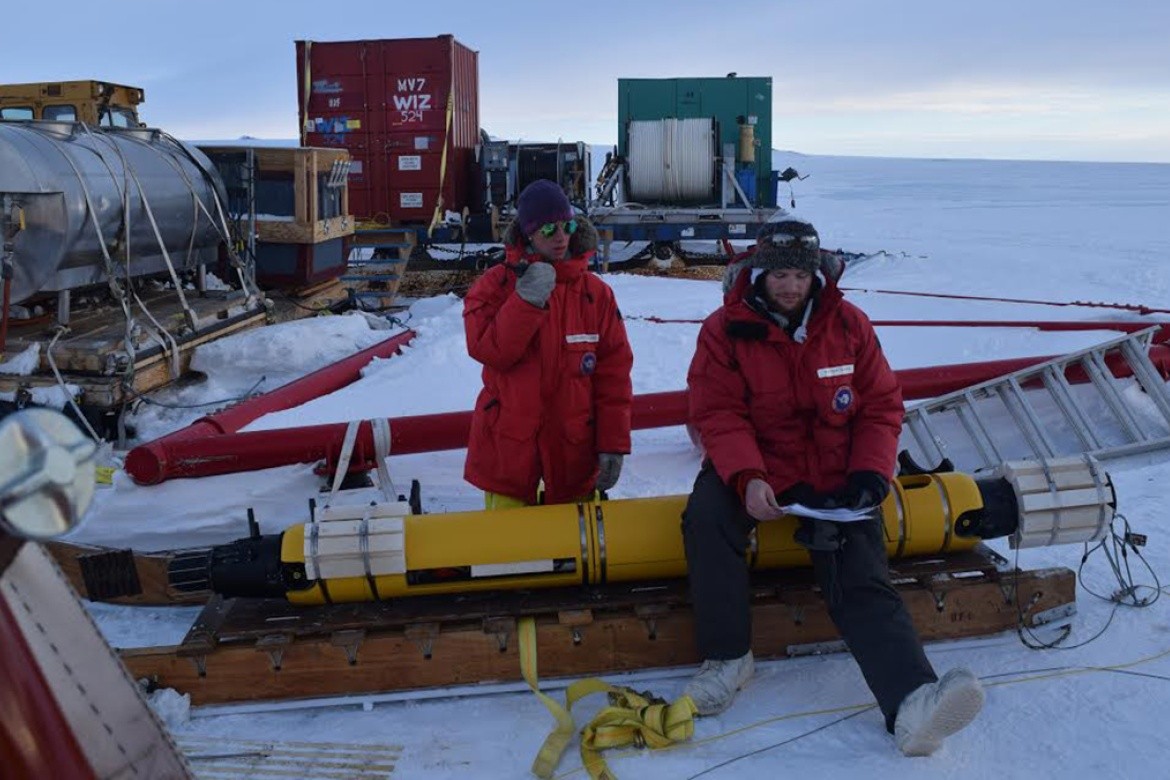From Earth's glaciers to Jupiter's icy moons

"The ability to chart your own unique path is tremendously valuable in becoming an independent thinker and researcher."
Major: Astronomy
Advanced Degrees: Ph.D., University of Michigan
Employer: NASA Jet Propulsion Laboratory
I spent my entire childhood wanting to become an astronaut. As I applied to colleges, I had a hard time deciding between geology or astronomy. Which one would get me into space? Indecisiveness is the hallmark of my life, it turns out.
At Mount Holyoke, of course, my indecisiveness was rewarded — I could major in astronomy and pair it with geology courses to study planetary science.
Mount Holyoke was the only place I found that allowed its students to be in control of their own learning experience. The ability to chart your own path is tremendously valuable, both in terms of becoming an independent thinker and in experiencing learning in a way that is uniquely your own. Because of the astronomy department’s willingness to support individual majors and independent research — for instance, I did research at the University of New Hampshire during my senior year — I started off my scientific career with a large dose of independence.
I really enjoyed the College’s small astronomy department, which I appreciate even more now that I’ve been involved in larger ones. It was very welcoming to me as a first-year, when I had absolutely no idea what I was doing. Because the department is so small, each one of its students gets the chance to discover and design their own path. With careful attention to our strengths and interests, the department genuinely felt like a place where individual scientific futures were made.
My time there was the origin of my confidence as a scientist. Although I’m extremely shy, I’m also assertive and I pursue science questions that are of interest to me — and not always the most popular ones. I like to find interesting stories to tell, no matter what field they are in. I think that comes from the encouragement from Darby Dyar, the chair of the department, and other professors during my time at Mount Holyoke. Darby let me pursue whatever independent research I wanted. All this led to the career I have today. My admittedly wide-ranging focus — and confidence in my abilities to tackle each different topic — comes straight from my time at Mount Holyoke.
After college, I completed my Ph.D at the University of Michigan. My dissertation focused on both earth science (glaciology) and planetary science (icy moons, like Jupiter’s Europa). I completed a postdoctoral fellowship with Britney Schmidt at Georgia Tech, where we studied a whole lot of things, like Greenland’s glaciers, Europa’s subsurface ocean, and spacecraft designs. We also built a submersible vehicle that we deployed under the McMurdo Ice Shelf in Antarctica. While it has been difficult to make a name for myself in both fields at the same time, I believe I’ve reached a place now where I’m regarded by peers as a truly interdisciplinary scientist.
Now I work at the NASA Jet Propulsion Laboratory in Pasadena, California, and I like to say that I work on ocean worlds — which, of course, includes Earth. I study anything with ice and oceans, or having to do with planets. On Earth, I study melting ice shelves around Antarctica, ocean heat, iceberg calving, etc. I also study Europa, and Saturn’s Enceladus, doing analog studies of fractures and modeling ice shells and surface processes. When I go to work in the morning I get to study space, which is just the coolest.
I joke that going to Antarctica was the closest I’ll get to being an astronaut — but what a place it was. To be out in the middle of nowhere, white all around, with huge mountains in the far distance, was awe-inspiring and really drove home to me why I love science so much. Deep down, despite the fact it’s often difficult, frustrating and thankless, you get to discover things. You get to explore. As astronaut Frank Borman said, “Exploration really is the essence of the human spirit.”